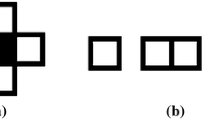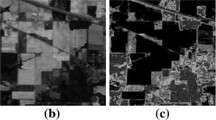Abstract
In order to solve the “massive information but low accuracy” problem of hyperspectral image (HSI) classification, a novel HSI classification method MFSSL-BPMRF based on belief propagation (BP) Markov random field (MRF) using multi-features and small sample learning (MFSSL) is proposed in this paper. Firstly, an extended morphological multi-attributes profiles algorithm is used to extract spatial information of HSI, and a spatial–spectral multi-features fusion model is established to improve classification results. Then, BPMRF is used for image segmentation and classification because of its superiority in the spatial–spectral combination classification. MRF can describe the spatial distribution features of ground objects based on neighborhood model, and the spectral information of pixels can be integrated into the calculation of conditional probability. BP is used to learn the marginal probability distributions from the multi-features fusion information. Finally, the small sample training set is selected to enhance the computational efficiency. In the experiments of several hyperspectral images, the proposed method provides higher classification accuracy than other methods, and it is efficient for the classification with limited labeled training samples.






Similar content being viewed by others
References
Ayerdi, B., & Romay, M. G. (2016). Hyperspectral image analysis by spectral–spatial processing and anticipative hybrid extreme rotation forest classification. IEEE Transactions on Geoscience and Remote Sensing, 54(5), 2627–2630.
Feng, W., & Bao, W. (2017). Weight based rotation forest for hyperspectral image classification. IEEE Geoscience and Remote Sensing Letters, 14(11), 2167–2171.
Feng, W., Huang, W., & Ren, J. (2018). Class imbalance ensemble learning based on the margin theory. Applied Sciences, 8(5), 815.
Hu, J., Tan, K., & Wu, L. (2015). An improved hyperspectral image classification algorithm based on multinomial logistic regression. Remote Sensing Technology & Application, 30(1), 135–139.
Kayabol, K., & Kutluk, S. (2016). Bayesian classification of hyperspectral images using spatially-varying Gaussian mixture model. Digital Signal Processing, 59, 106–114.
Li, J., Bioucas-Dias, J. M., & Plaza, A. (2010). Semisupervised hyperspectral image segmentation using multinomial logistic regression with active learning. IEEE Transactions on Geoscience and Remote Sensing, 48(11), 4085–4098.
Li, J., Bioucas-Dias, J. M., & Plaza, A. (2011). Hyperspectral image segmentation using a new Bayesian approach with active learning. IEEE Transactions on Geoscience and Remote Sensing, 49(10), 3947–3960.
Li, J., Bioucas-Dias, J. M., & Plaza, A. (2013). Spectral–spatial classification of hyperspectral data using loopy belief propagation and active learning. IEEE Transactions on Geoscience and Remote Sensing, 51(2), 844–855.
Li, J., Huang, X., Gamba, P., Bioucas-Dias, J. M., Zhang, L., Benediktsson, J. A., et al. (2015). Multiple feature learning for hyperspectral image classification. IEEE Transactions on Geoscience and Remote Sensing, 53(3), 1592–1604.
Moser, G., & Serpico, S. B. (2013). Combining support vector machines and Markov random fields in an integrated framework for contextual image classification. IEEE Transactions on Geoscience and Remote Sensing, 51(5), 2734–2752.
Mura, M. D., Villa, A., Benediktsson, J. A., et al. (2011). Classification of-hyperspectral images by using extended morphological attribute profiles and independent component analysis. IEEE Geoscience and Remote Sensing Letters, 8(3), 542–546.
Rui, B., Junshi, X., Zhaohui, X., et al. (2016). Ensemble classification for hyperspectral imagery based on morphological attribute profiles. Remote Sensing Technology and Application, 31(4), 731–738.
Sun, L., ZebinWu, J. L., Xiao, L., & Wei, Z. (2015). Supervised spectral–spatial hyperspectral image classification with weighted markov random fields. IEEE Transactions on Geoscience and Remote Sensing, 53(3), 1490–1502.
Zhou, Q., Zhang, C., & Zhang, Y. (2015). Relationship between the number of labeled samples and classification accuracy based on sparse representation. Proceedings of Science, 1, 97–103.
Acknowledgements
This work is supported by National Natural Science Foundation of China (Grant No. 61461003).
Author information
Authors and Affiliations
Corresponding author
About this article
Cite this article
Ren, R., Bao, W. Hyperspectral Image Classification Based on Belief Propagation with Multi-features and Small Sample Learning. J Indian Soc Remote Sens 47, 307–316 (2019). https://doi.org/10.1007/s12524-018-00934-y
Received:
Accepted:
Published:
Issue Date:
DOI: https://doi.org/10.1007/s12524-018-00934-y




